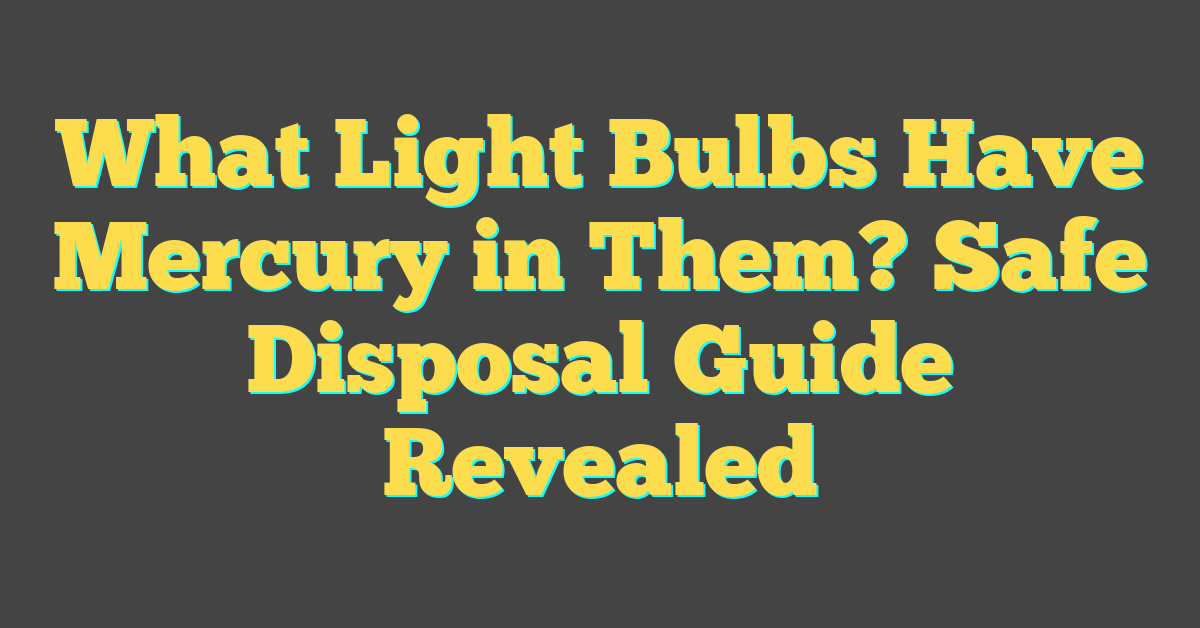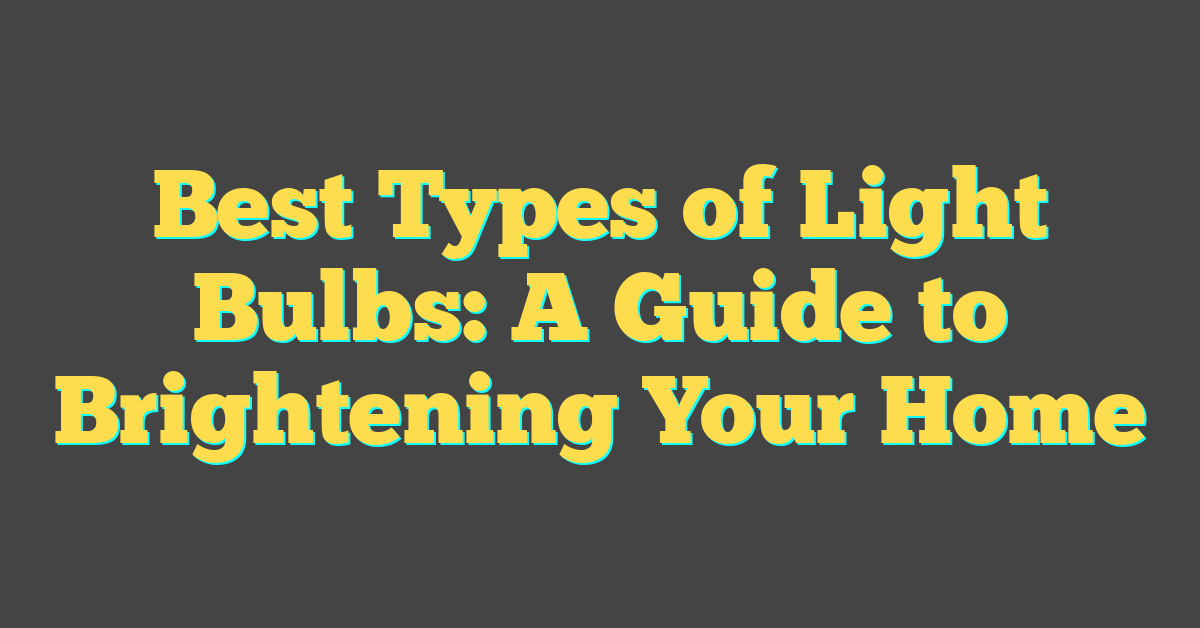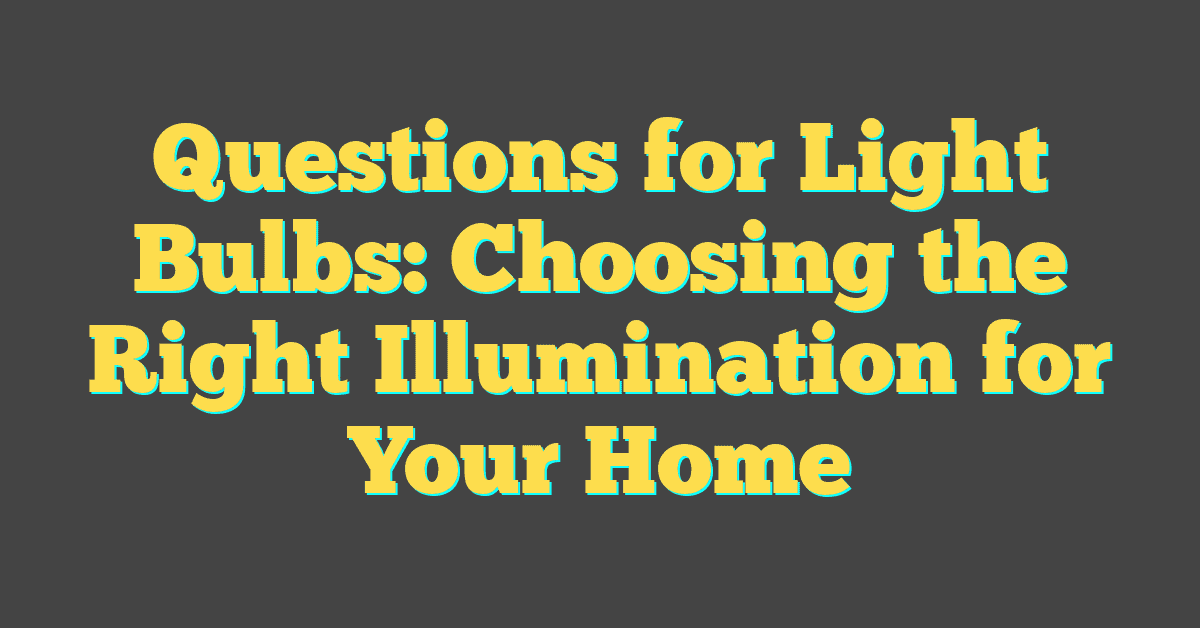Ever wondered why you’re told to handle certain light bulbs with care? It’s because some contain mercury, a necessary evil for their efficient glow. But not all bulbs are created equal when it comes to this toxic element.

You might be surprised to learn that the eco-friendly bulbs you switched to for saving energy could have a dark side. Let’s shed some light on which bulbs have mercury and why it matters for your safety and the environment.
Navigating the world of light bulbs can be tricky, but knowing what’s inside them is crucial. Stick around as we illuminate the types of bulbs that carry mercury and give you the lowdown on their use and disposal.
What is Mercury and Why is it in Light Bulbs?
Ever wonder why a tiny bit of mercury is tucked away in your energy-saving bulbs? It’s not just there for kicks; mercury plays a crucial role in how certain light bulbs function. Here’s a dive into the what and why of mercury in your lighting.
Mercury is a naturally occurring element, and in its vapor form, it’s used in lighting. When an electrical current passes through mercury vapor, it emits ultraviolet (UV) light. This UV light then hits a phosphor coating on the inside of the bulb, and voila, it’s transformed into the visible light that brightens your spaces.
You might be drilling down on which bulbs actually contain this element. Generally, it’s your fluorescent bulbs, including the compact fluorescent lamps (CFLs), and some types of high-intensity discharge (HID) bulbs, like those metal halide and high-pressure sodium lights often used in industrial settings.
Why the Need for Mercury?
This heavy metal is a double-edged sword. On one hand, it’s highly efficient at conducting electricity. This efficiency is what makes mercury-laden bulbs more eco-friendly on the power consumption front. They use less electricity compared to traditional incandescent bulbs, slashing your energy bills and reducing the overall demand on power plants, which indirectly helps curb pollution.
But it’s not without its risks. Exposure to mercury can lead to serious health issues and environmental harm, which is why you’re always advised to handle these bulbs with care and be attentive to proper disposal protocols. Yet, the good news is, advancements in lighting technology keep pushing the boundaries, seeking new ways to deliver the lumens you love without the environmental downsides.
Remember, perfecting your home’s ambiance or supporting your DIY projects doesn’t mean turning a blind eye to the subtleties of lighting. A bit of knowledge about what goes into those glowing objects can illuminate more than just your room. It can brighten your understanding of the intricate balance between functional home improvement and environmental responsibility.
The Different Types of Light Bulbs

As you explore the lighting aisles, you’ll find an array of bulbs, each with unique characteristics and uses. It’s like walking through a library of illumination, where every bulb tells a different story. Let’s shed some light on the main types you’re likely to encounter.
Incandescent bulbs are perhaps the oldest pals in the lighting family. They emit a warm, inviting glow and are often used in living areas where coziness is key. However, their energy efficiency is on the lower end of the spectrum. These bulbs work by heating a wire filament until it glows, a classic yet less energy-savvy method.
In contrast, halogen bulbs offer a more energy-efficient twist on the incandescent design. They produce a brighter, whiter light and are great for task lighting where detail is important. You’ll find these in areas like your kitchen or workspace.
Then, there are the LEDs (light-emitting diodes) – the new kids on the block that have taken the lighting world by storm. LEDs are champions of energy efficiency and longevity. Plus, with their versatility, you can use them anywhere, from dimmable ambient lighting to bright, focused task lighting.
But let’s not forget fluorescent bulbs and CFLs – the ones that bring us together to talk about mercury. These are tubes or coils that house a bit of mercury vapor. The mercury plays a pivotal role, as discussed earlier, in converting electrical energy into visible light efficiently.
« How to Tell if a Light Bulb is Bad: Troubleshoot Like a Pro
Are Black Light Bulbs UV? Uncover Their Hidden Uses & Safety Tips »
For outdoor lighting, security, or large indoor spaces, high-intensity discharge (HID) bulbs come into play. These powerful bulbs, which include metal halide, high-pressure sodium, and mercury vapor options, are designed for situations where bright, widespread light is a must.
| Type of Bulb | Contains Mercury | Typically Used For |
|---|---|---|
| Incandescent | No | Living spaces, ambiance |
| Halogen | No | Task lighting, workspaces |
| LED | No | General and specific lighting |
| Fluorescent/CFL | Yes | Offices, commercial spaces |
| High-Intensity Discharge (HID) | Yes | Outdoor, security, large areas |
Incandescent Light Bulbs: Are They Mercury-Free?

You might be wondering about incandescent bulbs and whether they align with your eco-friendly goals. Unlike the fluorescent and HID counterparts, incandescent light bulbs are indeed mercury-free. Their simplicity is their charm, as they heat a tungsten filament to produce light without the need for mercury or other harmful chemicals. This makes them safer to handle and dispose of, reducing environmental concerns.
But before you rush out to stock up on these bulbs, consider their energy efficiency—or more aptly, their inefficiency. In an age where energy costs are rising and environmental impact is a major concern, it’s important to weigh up whether the absence of mercury is a big enough tradeoff for the higher energy consumption. Incandescent bulbs convert less than 10% of the energy they use into visible light, making them far less efficient compared to their contemporaries.
When working on your next home DIY lighting project, it’s essential to balance your choices with the kind of ambiance and functionality you’re aiming for. If you’re looking for that incandescent warmth that feels like a cozy embrace, you’ll be pleased to know that you can achieve this without the worry of mercury. For those of you looking to mimic daylight, halogen bulbs—also mercury-free—might be a better bet due to their higher lumens and decent color rendering index.
Still, with the push towards eco-friendly lighting solutions, the incandescent bulb finds itself in the shadows of more advanced technologies. The LED revolution, for example, has brought us bulbs that not only skip the mercury but also slash energy use and last many years longer. It’s a consideration that might make your transition from old-school charm to modern efficiency a bit easier, especially for your conscience and your wallet in the long run.
Remember, lighting choices can make or break the ambiance in a room. They can also play a significant role in your energy consumption and eco-footprint. So while incandescent bulbs may be mercury-free, only you can decide if they’re the right fit for your space and values.
Compact Fluorescent Light Bulbs (CFLs): The Controversy Surrounding Mercury

When you delve into the world of Compact Fluorescent Light bulbs, you’ll quickly encounter the mercury controversy. CFLs contain a small amount of mercury, which is crucial for their energy-efficient light emission. However, this silver streak in CFLs is a double-edged sword. While it’s what makes them more energy-efficient than incandescent bulbs, it poses significant environmental hazards if disposed of improperly.
The mercury content in a single CFL is about 4 milligrams—barely enough to cover the tip of a pen. Yet, if a bulb breaks, this mercury can be released into your home. Here’s where your DIY expertise comes in handy—you should know how to safely handle and dispose of these bulbs. You might tip your hat to CFLs for their lower energy usage, but you’d also better be ready with a cleanup plan.
Despite the concerns, the environmental impact of CFLs is complex. It’s essential to recognize that CFLs use about 70% less energy than incandescent bulbs, and they last up to ten times longer. This means fewer bulbs in landfills and less frequent manufacturing, reducing mercury emission from power plants themselves.
Let’s look at a comparison to put this into perspective:
| Light Bulb Type | Energy Usage Reduction | Lifespan Compared to Incandescents |
|---|---|---|
| CFLs | Up to 70% | Up to 10x |
| Incandescents | None | Standard |
As a lighting aficionado, you’ll find yourself weighing these pros and cons. Remember that while CFLs help cut down on home energy use, they necessitate careful end-of-life management. Recycling programs for CFLs are growing, making responsible disposal more accessible. By supporting and utilizing these programs, you champion a brighter, more sustainable future.
What’s clear is the impact your lighting choices have. With each decision, you influence both the ambiance of your space and the health of the planet. Whether you opt for CFLs, LEDs, or another lighting option, you’re not just screwing in a bulb — you’re shedding light on your values. Keep this in mind as you illuminate your home and consider which lighting solution aligns best with your eco-friendly DIY spirit.
LED Light Bulbs: A Mercury-Free Alternative

As you continue your journey to illuminate your spaces while remaining eco-conscious, you’ll be pleased to learn about LED light bulbs, your mercury-free option. Unlike CFLs, LED bulbs contain no mercury, making them a safer choice for your home and the environment.
Imagine embarking on your next DIY project with the peace of mind that comes from using LEDs. They are designed to offer superb lighting quality without the hidden costs to health and nature associated with hazardous materials. With their durable build, LEDs are remarkably long-lasting, often running for 25,000 to 50,000 hours. That’s a significant step-up from the already improved CFLs, which typically clock in around 8,000 to 10,000 hours.
Here’s a quick comparison to highlight the differences:
| Light Bulb Type | Average Lifespan (hours) |
|---|---|
| LED | 25,000 – 50,000 |
| CFL | 8,000 – 10,000 |
| Incandescent | 750 – 2,000 |
This longevity means fewer trips up the ladder for you and less waste for our planet. LEDs are not just about convenience or eco-friendliness; they’re also about cost savings. Despite the higher initial price tag, the return on investment for LEDs is substantial thanks to their energy efficiency and extended lifespan.
When you’re selecting the perfect bulb for your latest home embellishment, consider the vast array of options LEDs present. You’ll find them in every shape and size you can think of, from soft ambient globe lights to focused spotlights. They also cater to the full spectrum of color temperatures, allowing you to set the exact mood you’re after – whether it’s the warm yellow of a cozy nook or the crisp white of a focused workspace.
Moreover, innovative advancements in LED technology have resulted in smart lighting solutions, controllable with just a tap on your smartphone or a simple voice command. This ease of control not only adds a layer of convenience but can also contribute to energy savings as you dim lights and switch them off remotely with ease.
Proper Handling and Disposal of Mercury-Containing Light Bulbs
When you’re updating your home’s lighting or replacing a burnt-out bulb, it’s crucial to handle and dispose of mercury-containing light bulbs appropriately. CFLs and some types of HID bulbs are the most common household items that contain mercury. To ensure your safety and environmental protection, take these steps:
First up, when a mercury-containing bulb breaks, it’s important to avoid direct contact with mercury. Clear the room for at least 10 minutes and use stiff paper or cardboard to scoop up the fragments. Sticky tape is great for picking up the tiny pieces, and damp paper towels can mop up any residual powder.
For disposal, don’t toss mercury-containing bulbs in your regular trash. Many areas have specific guidelines for getting rid of these types of bulbs safely:
- Recycling is the best way to dispose of bulbs containing mercury. Check if your local waste management facility has a recycling program for mercury-containing light bulbs.
- Mail-back services are available from some manufacturers and recycling programs. They provide a safe and pre-labeled container for shipping the bulbs back for proper disposal.
- Retail drop-offs can be a convenient option. Certain home improvement stores and other retailers offer recycling bins specifically for CFLs and other bulbs that contain mercury.
Always store the used bulbs carefully until they can be disposed of properly. Use the bulb’s original packaging or a sealable plastic bag to transport them to the recycling center or retail drop-off. This will minimize the risk of breakage and mercury exposure.
Remember that switching to LED bulbs can significantly reduce the hassle associated with handling and disposing of bulbs with mercury. LEDs don’t contain mercury and are much more durable, with a lower risk of breaking. Plus, they’re energy-efficient and last longer, which means you won’t have to replace them as often, ultimately contributing to a cleaner, healthier environment around your home.
Conclusion
Now that you’re aware of which light bulbs contain mercury, you can make informed decisions about the types you use in your home. Remember, safe handling and proper disposal are key to protecting yourself and the environment. Don’t hesitate to take advantage of recycling programs or other disposal services to get rid of mercury-containing bulbs responsibly. And if you’re considering a switch, LED bulbs are a fantastic mercury-free option that also save on energy and last longer. Happy lighting!
Frequently Asked Questions
What should I do if a mercury-containing light bulb breaks?
Avoid contact with the mercury and ventilate the area. Carefully scoop up the fragments with cardboard and seal them in a container. Refer to local guidelines for cleanup procedures.
How do I properly dispose of mercury-containing light bulbs?
Take the bulbs to a recycling center, use mail-back services, or find a retail drop-off site. Check with your local waste management services for specific disposal recommendations.
Can I throw mercury-containing bulbs in the trash?
No, due to their toxic content, they should not be disposed of in the regular trash. Always seek proper disposal methods like recycling.
Why is it important to avoid mercury exposure?
Mercury is a toxic substance that can harm the nervous system if inhaled or absorbed through the skin, hence it’s important to handle it cautiously.
Are LED bulbs a safer alternative?
Yes, LED bulbs are mercury-free, more durable, energy-efficient, and a safer alternative to mercury-containing bulbs.




